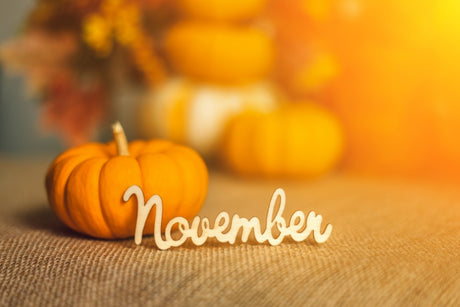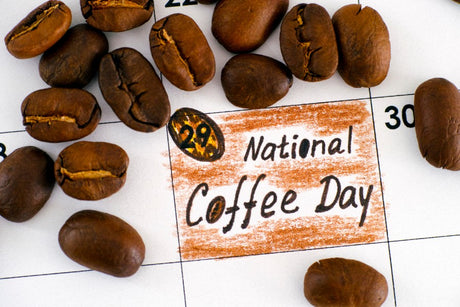mycuppa November 2023 Newsletter
Welcome to our subscriber newsletter.
Firstly, we remind our readers that peak freight season started last week with the Click Frenzy event.
The monster BFCM sales week is just around the corner, and with retailers stocking up inventories, we expect parcel networks to experience higher congestion with a slowing down of transit times.
History has shown the worst period for parcel shipping in Australia is the last week in November and the first week in December.
Please be patient by allowing a few extra days for parcels to arrive until the peak season ends in late January.
We are excited to announce the arrival of new Brazils, including an Anaerobic Fermented lot.
Fermented coffees offer a more unique and distinctive flavour profile, and this boozy little number ticks all the boxes for a rule-breaking rebel.
It's way different to a traditional Brazil cup, and that's exactly how we like it.
Read our story on how fermented coffees are now the most talked about feature of the specialty coffee segment.
Secret Label is a joyful union of roasted hazelnut, sweet raisins, fig and stone fruit acidity with nice fruit complexity and a syrupy body that finishes with delicious milk chocolate.

Secret Label
For this month's Secret Label, we explore the interesting fusion of savoury and fruit elements in a blend.
Roasted hazelnut, fig, raisin and caramel flavours contrast with sweet stone fruit acidity, syrupy body and a delicious milk chocolate finish.
A coffee with many layers of rich, clean flavours that are sure to satisfy the Secret Label brief of doing "coffee a bit differently".
Grab it here - Secret Label.

Why farmers are scrambling to "ferment" their coffees
Fermentation of ingredients and beverages is not an innovation.
It's a well-established practice in many craft-driven industries, such as beer, bread, wine and cheese, where manufacturers strive to enhance, extend or create unique and interesting products.
But for coffee, there has been a long-standing tradition of farmers aiming for improved quality, consistency and yields over the high risks involved with experiments of trying fermentation.
Over the last six years, we have seen more fermented coffee available in the raw coffee market, mainly in the higher end of specialty.
One of the first "fermented" lots we used was back in 2016 with a Colombian coffee that was processed using the claimed "Long Fermentation" method. Back then, we imagine the long fermentation would have been rather mild or conservative than the radical and extreme methods today.
Initially, I was skeptical about trying this Long Fermented Process (LFP) coffee. Still, after cupping and tasting, it seemed the same or similar to most other Colombian lots available at the time.
Trying to get more detail about how that fermentation process worked was like pulling teeth. Sure, I get the secrecy, but it bordered upon a suspicion: "Is this a smoke screen marketing gimmick to enable the broker to charge more ?".
I had often wondered if this long fermentation was nothing other than an extended delay between cherry picking and processing for removal of the outer mucilage.
Once a coffee cherry is picked from a tree, a natural fermentation commences.
During the same period, competitors in the World Barista Championships began using wild, funky coffees never seen before on the global stage. Of course, the point of these competitions was to "outgun" rivals and blow them off the stage with amazing coffees, especially the creative "signature drink" segment.
Fermentation in coffee competitions has become a controversial topic, with highly ranked competitors disqualified for allegedly violating rules on fermented coffees.
Competition rules needed to keep changing to address recent advances in fermentation methods. Even today, the use of fermented coffees in comps is a moving target.
Pretty soon, we were hearing terms such as lactic fermentation, using yeasts and bacteria, or anaerobic fermentation by controlling oxygen.
Coffees were being presented and sold with tastes of tropical mango or strawberry daiquiri.
The possibilities seemed endless, and farmers began looking more like craft brewers than coffee mills with massive, shiny, stainless tanks installed in processing facilities.
But fermentation is not without high risks and significant labour effort.
For these and other reasons, fermented coffees are more expensive than traditional washed, semi-pulped, pulped or sun-dried coffees.
Farmers must control fermentation precisely, or the process will dramatically destroy the coffee's inherent quality and ability for sale or trade.
It may require the Farmer to wake in the middle of the night and tend to the next step. You can see how there are many extra steps in materials handling before the coffee is ready for packaging and trade.
Fermentation of coffee is, without doubt, the most significant innovation since the invention of raised beds and mechanical pulping and drying.
Fermented coffees may also suffer from unknown storage risks, or they cannot age with the same stability and quality levels as traditionally processed coffees.
We have heard many nightmares of coffee brands buying "amazing, mind-blowing" (and expensive) fermented lots only to discover that in 3 months, the raw coffee has deteriorated to the point where it tasted like vinegar.
The term "blown up" became a way of referring to fermented lots that had "peaked", causing panicky brokers to liquidate their pricy holdings to unsuspecting or curious roasters at discounted pricing - but who wants their coffee to taste like vinegar? Not us.
Our approach to fermented coffees has always been relatively conservative. After being an early adopter of the long ferment process, we sat on the sidelines to allow farmers, brokers and the entire supply chain to learn more about how product integrity can be better maintained.
One of the primary attractions of fermented coffees is the increase in fruit-driven complexity. As we have often said, fruit is a highly desirable attribute in a coffee.
Sometimes, there can be a simple or basic correlation between fruit levels and price, e.g. higher fruit = better price, hence why farmers see the financial incentives to experiment with value-added fermentation to increase the revenue per kilo of their crop.
Over the last two years, we have used a double-fermented coffee in our highest-selling coffee - Suuweet.
This double-fermented lot brings incredible sweetness without the winey and pulpy notes to deliver a beautifully smooth and rich base for Suuweet.
Last week, we received a new lot of anaerobic fermented Brazil for our Cambara offering in the store.
Anaerobic fermentation is performed by placing the raw coffee (either cherries or green beans) into tanks or barrels by eliminating oxygen for hours to days, depending upon the farmer's target, before the coffee is dried and packaged into large sacks or bags to trade.
Anaerobic fermentation alters the physical appearance of raw coffee, changing the normally consistent light green colours into mottled yellows and varied greens.
Roasting of the anaerobic fermented coffee reveals a higher distribution in different shades of brown. It's an expected result similar to many sun-dried coffees, such as Ethiopians.
In the cup, we see a heavy fruit and winey aroma with a rich, intense, stewed fruit, rhubarb-like sweetness, acetic acids and a delicious boozy aftertaste that lingers for ages.
It's unlike any standard Brazil cup, and it's exceptional value for a specially prepared fermented coffee.
Experience something new, exciting and different.
The new Brazil Cambara anaerobic is ready now for you to enjoy.
Grab it here - Brazil Cambara













